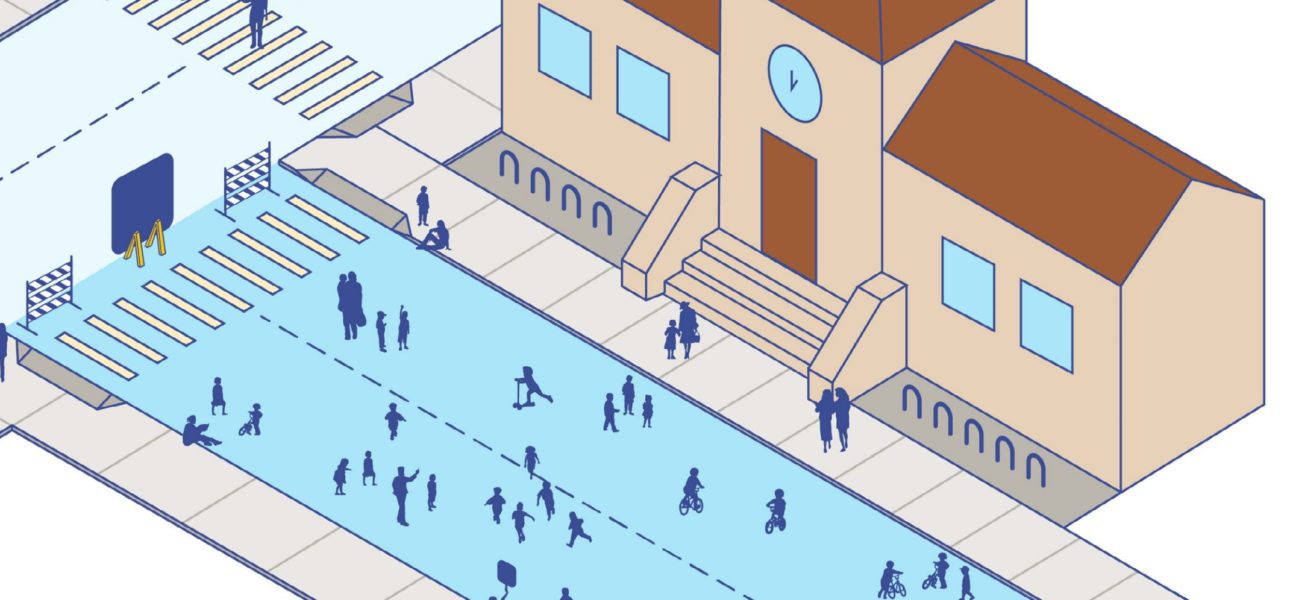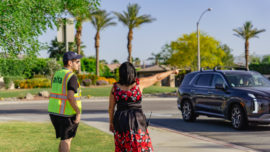Reducing traffic near schools and creating opportunities for students to walk, bike, and play improves safety, mental and physical health, academic performance, and more. This School Streets and Park & Walk Guide from Alta and the Minnesota Department of Transportation's SRTS Team provides guidance on shortening walking distances, opening up streets for play, and providing adult supervision. Best of all, these programs can be quickly implemented at little to no cost to schools.
School Streets are temporary car-free zones adjacent to or leading up to a school that are strategically closed to vehicle traffic and opened to children walking, biking, and rolling. School Streets help manage traffic and improve safety during school arrival and dismissal by eliminating vehicle congestion in front of schools and creating an environment where children can safely walk, bike, roll, play and learn before, during, and after school.
A Park & Walk takes place before school when school buses and caregivers drop students at an established location a few blocks from school. Students are greeted by school staff, parents, or other volunteers and are supervised on their walk and roll into school. This strategy is also called “Remote Drop, “Bus Stop and Walk,” or “Drop and Walk.”
Combining School Streets and Park & Walk programs creates additional opportunities for more students to safely walk, roll, and be physically active before school. When implemented together, the program can offer a robust encouragement and safety strategy to get students to school.





